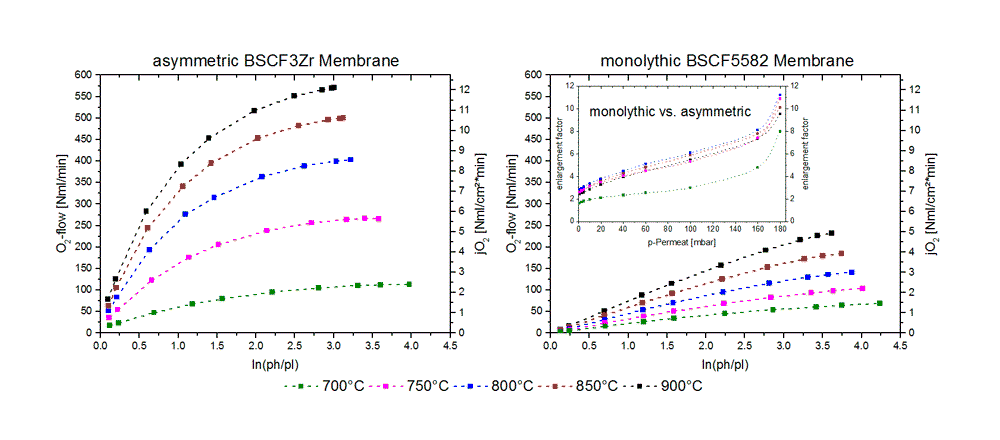


The oxygen separation from air using mixed-conducting ceramic membranes is manly influenced by three parameters. In addition to temperature and oxygen partial pressure ratio the thickness of the membrane has a big impact. Thus, a reduction of these geometric parameter leads to shorter diffusion paths for oxygen ions and to a higher oxygen permeation because of faster exchange processes. To get a sufficient mechanical stability these layers are coated on porous structures leading to an asymmetric membrane design. Depending on driving force and temperature the permeation rate of such a composition is about 4 – 8 times larger than of comparable monolithic membranes with a wall thickness of 1 mm (Fig. 3).
In addition to pure oxygen separation performance the long-term stability is important for an economical operation of asymmetric membranes. For this purpose, such a tube was measured continuously in a 300-day test at a constant temperature of 850 °C and a vacuum pressure of 50 mbar (Fig. 1). At the beginning, a decrease in oxygen permeation is observed. One reason for this behavior could be a densification of the porous support and thereby a rising of the permeation resistance. However, this effect was overcompensated by an increase of the permeation dominating after 75 days. A reason for that could be a grain growth process inside the membrane layer. Similar effects were already described for small BSCF samples with different microstructure varied by the kind of sample preparation.
The oxygen content of the permeate was always higher than 99.5 vol-% which shows that the very thin membrane layer was not damaged during the investigations. Some power break down occurred during the measurement entailed by a rapid cooling of the membrane but without any damage. Nevertheless, a deformation in the hot zone of the membrane tube was observed after removing from the test rig as shown in Fig. 2. This could be caused by the weight of a pressure sensor mounted at the upper end of the membrane accompanied by a permanent load of approx. 750 gramm. Nevertheless, this mechanical stress did not cause any damage.